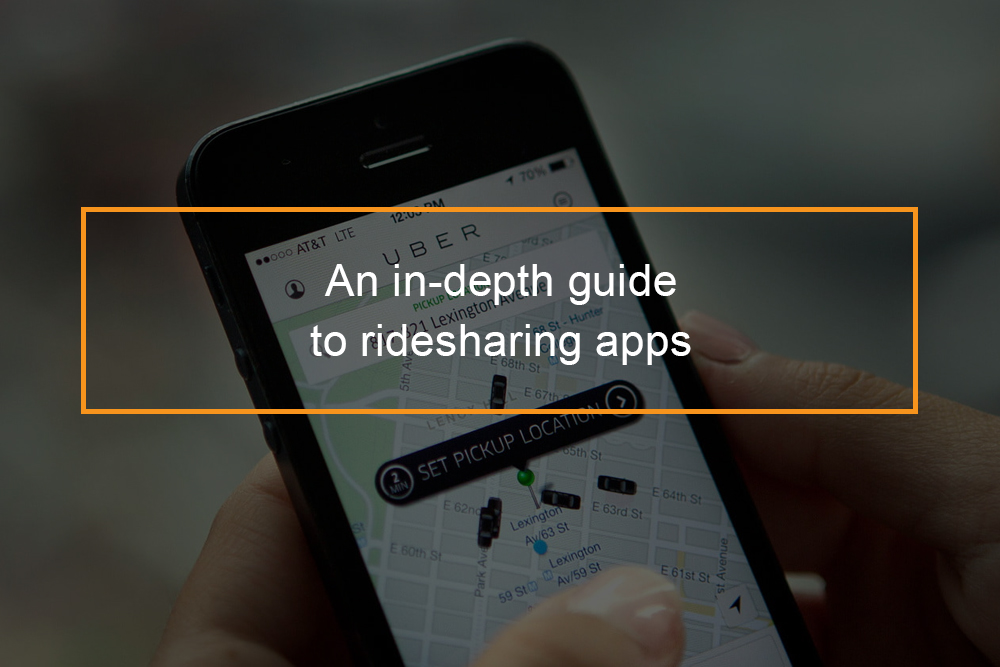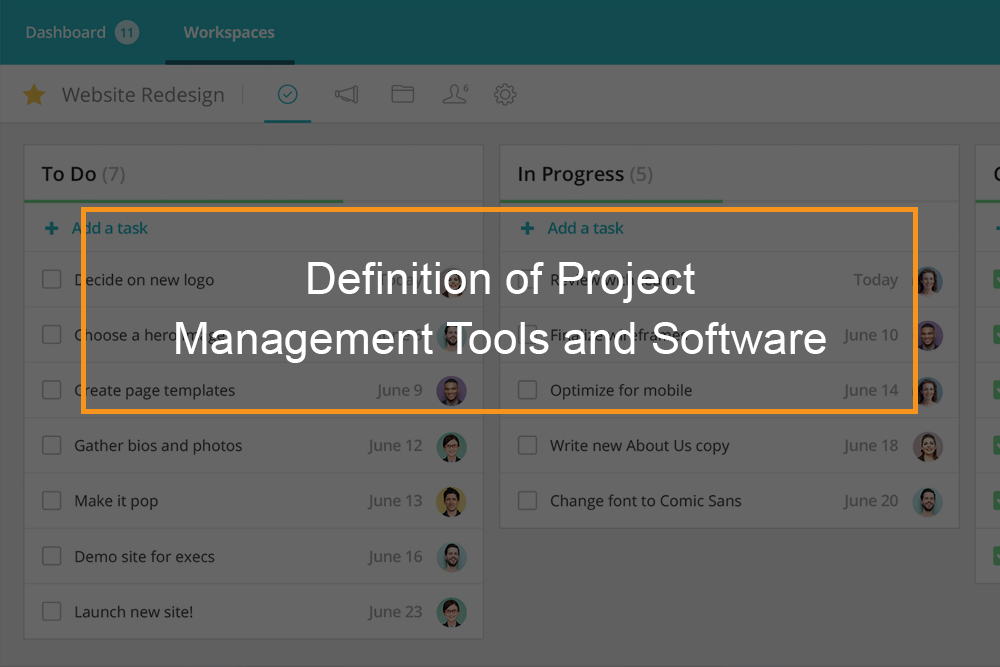
Traveling has never been as convenient as it is today. The need to safely move from point A to B has caused the rise of on-demand ridesharing services. You can request these services through an app on your smartphone. Whether you want to get to work, or a party or just traveling somewhere, there are many apps to suit your needs.
What are ridesharing apps?
A guide to understanding ridesharing apps
Ridesharing commonly referred to carpooling was when a driver and passenger shared the same destination. The passenger or passengers would often cover either half or a certain percent of the cost of the trip. The goal of this was to subsidize the cost of the trip for the driver.
Today, ridesharing has evolved to more than just carpooling. It is a profit-oriented venture where the diver has no destination but is offering transportation services at a fee, like a taxi. The riders can request these services through an app or through a website that charges a fee to connect riders and drivers. It can be further defined as sharing a car for monetary or non-monetary benefit with passengers to provide convenience, environmental benefit and reduce the congestion on roads.
The difference between ridesharing and carsharing and taxi services
Carsharing
It provides the convenience and benefits linked with private cars without the costs and responsibilities of ownership. It is viewed as an alternative mode of transportation in urban areas as it is more flexible than mass-transport, owning a car can be expensive, or the dense urban environment makes owning a vehicle impractical.
Apps like ZipCar and Getaround provide on-demand access to vehicles locally. The users pay as per a predefined rate and services either have designated pick up and drop off points or deliver the car to the user. This is an easier alternative to owning a car, and the user has the freedom to go anywhere unlike in ridesharing services.
Carsharing can be categorized as follows:
-
Peer-to-peer car sharing
This is the process wherein a community of car owners they avail their cars for rent to others for a short period via an app or website. -
Business to consumer (B2C) car sharing
A company with a car fleet facilitates the sharing among its consumers. It has been adopted by car makers like BMW, GM among others and a lot of car rental companies too. -
Co-Op or Non-Profit car sharing
An organization or online community facilitates the sharing of available vehicles, focusing on environmental and social benefits rather than just getting profit.
Taxi services
Hailing a ride refers to flagging down a car, usually a taxi from the side of the road. Taxi drivers usually work for a taxi company, in shifts and most of them do not own the cars. The taxis are branded with the company’s logo and have a beacon to indicate if they are available.
The taxi industry is regulated per the city it is operating in and the drivers must be well trained. The licenses needed to work in the city are often very few and expensive to obtain. The company has a live dispatch team that coordinates rides and helps drivers who may have issues on the road. Riders can call and request a pickup or hail a cab.
The city sets the rates and the fare is paid at the end of the ride either by card or cash. There is a meter that runs from the beginning of the trip until the rider arrives keeping track of the time and distance in plain view of the rider. Taxis benefit from peak hours like rush hour or bar closing times when ridesharing services often double or triple their prices.
Ridesharing
Rideshare can thus be defined as an arrangement between the car owner and the person who boards the car at the pickup point to the destination through an app or website at a fee. The driver does not share a destination with the passenger.
Traditionally it was seen as car-hailing or carpooling. It meant persons from the same area such as a place of residence using one car to go to a common destination like a business park or workplace. The term ridesharing and ride-hailing are often used interchangeably, but this is misleading as they do not mean the same thing. The driver often owns the car and they blend in well with other vehicles. The only identifier can be a sticker or minimal branding on the car. Some have a light up display on the display.
Ridesharing operators are not as heavily regulated as taxi companies. The signup process often requires a background check, vehicle safety certifications, and some areas require special licenses. There is no mandatory training program though some companies need the drivers to attend orientation.
Ridesharing apps operate as the dispatcher connecting riders to drivers. Ridesharing companies do not allow hailing, and the drivers are prohibited from accepting hails by law. If they took hails they would be taxis. The hailing of the car via the app or website is the major distinction between the two. Companies like Uber and Lyft and others use smartphones and ride-matching software to connect entrepreneurial drivers to riders seeking a one-way ride. The passengers then pay virtually.
Evolution of ridesharing apps
How ridesharing has changed over the years?
Not long ago ridesharing meant having some people who were going the same way sharing a single vehicle. It was referred to as carpooling. People gathered for a sole purpose to bring them to a shared destination like a workplace. Despite the term what was being shared was the ride not the car.
Now the definition of ridesharing has changed. It now includes carpooling and providing a taxi-like service at a fee which you can also choose to share. It has diversified transportation options with the ability to be truly independent. Car owners can now earn some more income by either hiring out their cars or by being drivers for these companies.
Ridesharing mobility services fall between traditional public transport and private cars, creating a mid-tier micro transit system. Apps like Uber and Lyft are being accompanied by commuter bus apps like Leap Transit and Bridj with more carpooling apps that provide vanpooling services like Via.
With the big part the rideshare industry plays in the transport industry by targeting a niche populous that can pay for rides and do not want to own a car of their own, there are plans to integrate these cars into public transport systems to reduce congestion on the roads.
The legislation in this industry is still being worked out, but many companies are not as strictly regulated as other transport services like taxis. There are propositions to make them comply to the same standards set for taxi drivers and chauffeurs. They must have the right insurance, pay license fees and have background checks done before they start. The companies have had to leave certain markets due to over-regulation.
There have been efforts to upgrade taxi services to help them compete.
How do they work?
Ridesharing platform operations
Ridesharing ride services are often called real-time, on-demand, or peer-to-peer ridesharing services. This means the user can request transportation in real time and when the driver accepts the request, they get your information and location and head to your place to provide transportation.
Rideshare platforms use a smartphone app to link the driver with passengers in the area. The driver logs into the app to show that they are online indicating they are available.The user, via the app, can choose a destination and request a pickup. The driver then gets a ping and can choose to accept or decline the request. If the driver accepts the ride request, he or she then proceeds to the pickup location, picks up the passenger and proceeds to the destination as shown on the app.
On arrival, the passenger pays the fare as indicated in the app and exits the car. The fare is generated in-app, so there is no money exchanged between the driver and rider. The app allows the driver and rider to rate each other maintaining the quality level of service and respect for both parties. Ridesharing solves some major issues found public transportation and taxis.
- Bus stops and bus terminals are a hotbed of crime because of the cash transactions.
- They rely on schedules, and the services may not be available whenever the user wants.
- Taxis are safer but making payments can be problematic too.
Reasons to rideshare
Ridesharing is not only safer but also reasonably priced
- It is available when the user needs it, and they can go anywhere they want.
- It invalidates the need to find parking when you travel.
- It has helped reduce deaths caused by drunk driving.
- It reduces car expenses, depending on how far you rideshare daily.
- It has introduced a lot of jobs thus boosting the economy.
- It is good for the environment as with fewer cars running the emissions are less thus reducing your carbon footprint.
- Some public transportation and taxis are not allowed on certain routes or roads, but ridesharing cars can use these routes without restriction.
Downside to using ridesharing services
- The drivers might not show up
- It can be unsafe as you do not honestly know the people you are in the car with. Some companies perform background checks on their drivers.
- Since they rely on smartphones if the phone dies or loses its connectivity, it can be problematic.
Examples of these apps
Ridesharing app categories
Ride-sharing apps can be categorized as follows:
For the driver
These apps help the driver get the ride request from potential passengers. They notify the driver of a ride request and also have various filters depending on the app like filtering out pool rides and other select trips. Depending on the setup of the app, the driver can opt to drive for selected tiers.
There other additional apps that help the driver manage and keep track of current riding trends like optimal pickup spots and navigate better. They include the driver versions of all the passenger ridesharing apps like Uber and Lyft, google maps, GasBuddy, Waze, etc.
For the passenger/rider
These help the rider request a ride via their respective apps. GPS locates them. Here are some examples and how they work:
These include apps like
Uber
This app matches passengers ride requests with drivers based on the GPS location of the passenger’s phone. It sends the contact information of the driver to the passenger and also alerts them via text when the driver arrives.
Uber has a levels feature that sets it apart from other apps. These levels allow users to request everyday cars, taxis, SUVs, and black cars which have a luxurious feel.Pricing is fairly competitive, and if you do not mind riding with strangers, the UberPOOL feature is for you. It also allows for fare splitting regardless of the car type chosen. Fares are quoted in-app, and users can pay as per the methods indicated.
UberASSIST is an on-demand car service for disabled persons. These cars have access options for disabled persons, and the drivers are also trained. Users can also review and rate the ride once they get to their destination.
Uber features that set it apart
- It provides a fare estimate of the trip before you request a ride.
- Split fare allows you to share the cost of the ride with other passengers
- Share ETA feature allows uber users to send anETA to family and friends, so they know when to expect their arrival.
- Uber allows a user to request a ride for another user. It allows you to pick up a friend and request a ride to the riders final destination and even pay for the trip.
Lyft
It is the second largest ridesharing app by volume. It is a lot like uber and institutes demand-based pricing during busy hours. It, however, caps premiums at 400%. If this is too expensive, Lyft has a carpool service known as LyftLine that allows you to split the fare with other passengers.
Features of the Lyft app
- The map feature on the home screen displays a riders real-time location, the available cars.
- Riders drag the pin to the area where they want to be picked up.
- It also has an add destination bar and also allows you to view upfront costs.
Gett
It is more affordable than Uber and Lyft although it is not as widespread as the two. It does not charge premiums during peak hours and can get away with it because Gett drivers are paid a competitive hourly wage rather than a percentage of every fare like Uber and Lyft.
Wingz
This app provides transportation to and from the airport. The riders can schedule a ride in advance, choose the time and get to know how much it will cost beforehand. They can virtually meet the driver and even request their favorite drivers.
Arro
It is an on-demand taxi service that provides transportation when needed. Because they use taxis, there is no surge pricing and pricing is based on the taxi meter. Unlike other cab services, its service is more reliable because pickup requests are sent to the drivers through dedicated data terminals on the taxis rather than through their phones.
Flywheel
All drivers are licensed professionals since the company partners with taxis. It does not have surge pricing, so the rates are pretty steady.
Zimride
This app allows drivers to fill car seats and they choose riders based on the passenger’s data like musical instruments and past feedback. The users can book rides, and the driver has a day to accept or decline the request. Payments are made via PayPal.
Via
Its main feature is its low flat rates for shared yellow cabs instead of basing the price on the distance traveled. You settle the fare with any credit card, but you must buy ride credit. You can opt not to get this credit and pay a $2 pay-per-ride surcharge.
BlaBlaCar
It is a ridesharing service that connects drivers going on long trips with passengers going the same way. The user enters the departure and destination and when you want to travel and choose a driver headed in your direction. You can get their contact information and contact them and book your seat. Show up at the meeting place and with the agreed amount as this is not a ride but just a means of offsetting some of the costs of the trip. You can also rate the driver after the trip.









